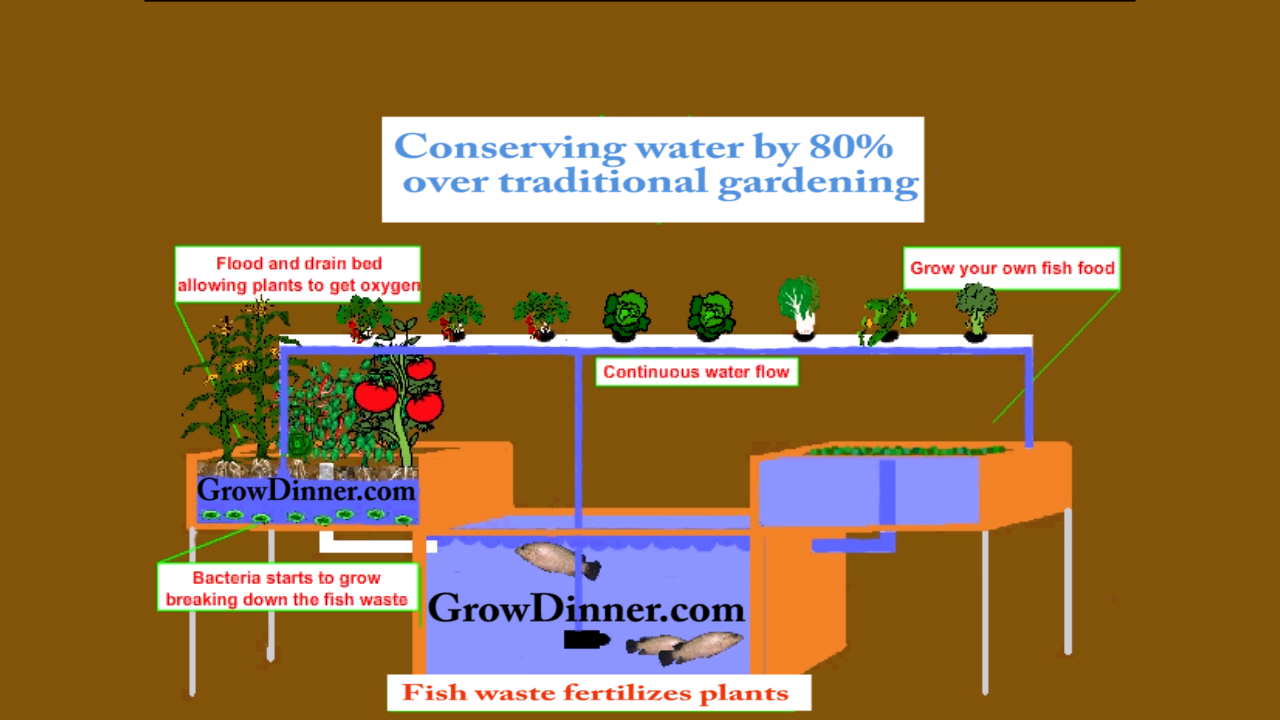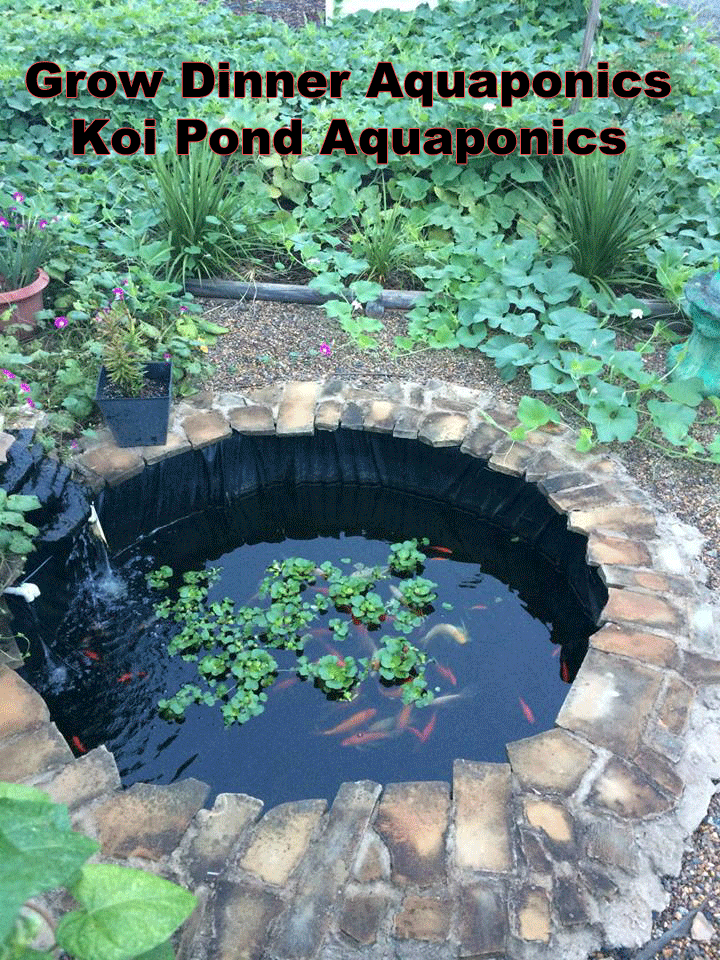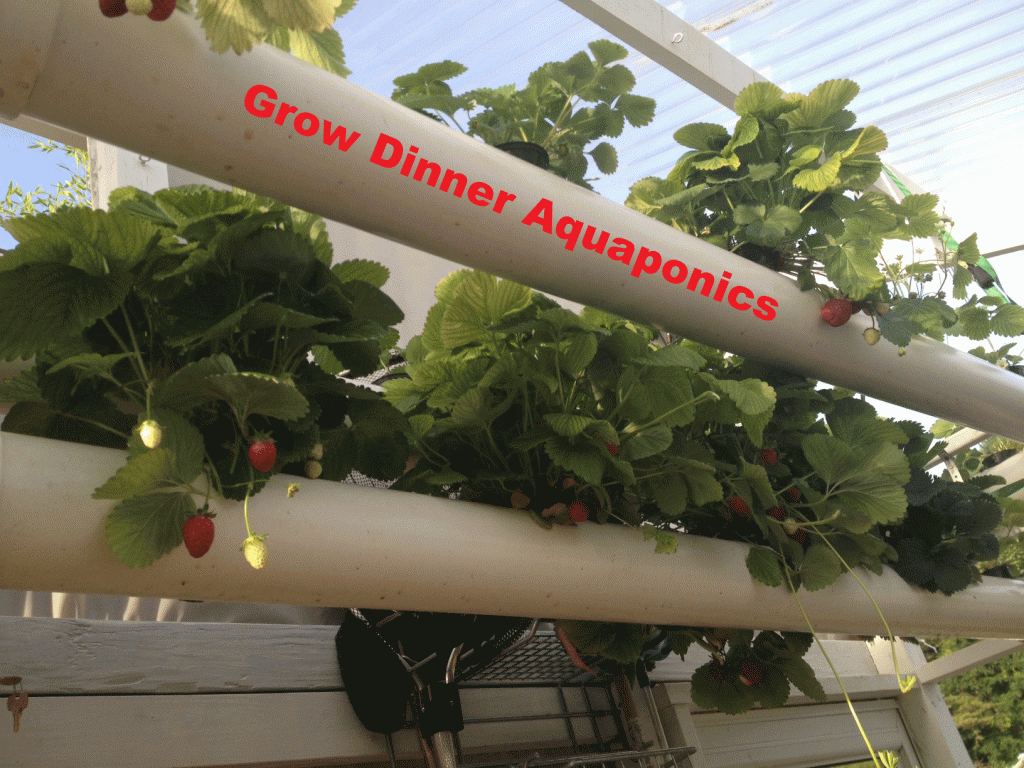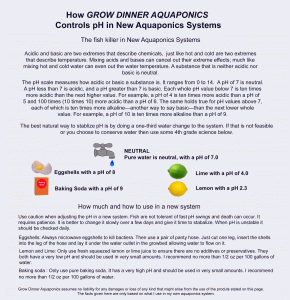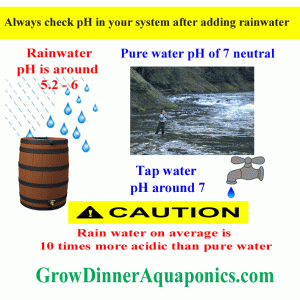NEED HELP WITH AQUAPONICS?
We offer a Free Newsletter, Do It Yourself Videos & more!
WHAT IS AQUAPONICS?
Aquaponics is a self-sustainable gardening method where fish and vegetables grow in the same system where nutrient rich water from the fish tank circulates through the system giving plants the nutrients needed to grow fresh organic healthy vegetables and fish. Aquaponics can produce more food per square foot than any system on earth.
Using fish waste to grow plants organically is a system based on a thousand year old technique. For those of you who are new to Aquaponics, the system moves nutrient rich water from fish tanks to a variety of grow systems for plants and then returns the water back to the fish tank to continue the cycle in a looped system. There are several different methods to grow your plants.
DIFFERENT TYPES OF AQUAPONICS SYSTEMS
GROW MEDIA BEDS
The media grow bed is a waterproof container or box with a pond liner filled with what is referred to as grow media such as stone, expanded clay, shell or other materials. The type of grow media used is based upon your preference of what is available in your area and/or what your wallet can afford. The bed has a continuous flow of water that drains back into the fish tank. Plants are transplanted as seedlings from soil into the grow media and will continue growing until harvest. I find this system works well for plants that require a lot of water however not all plants like the same amount as others and will suffer.
Flood and Drain Media Beds are similar to the Media Grow Beds discussed above with the exception that media beds fill with water from the fish tank and drain on a cycle. The benefit of flood and drain beds serves the purpose of allowing plant roots to get oxygen as needed and will prevent plants from getting root rot. Water flows into the bed then returns to the fish tank to start the cycle all over again. Overall, I have found the flood and drain bed method is a good choice because it will grow almost every type of plant with ease.
FLOOD AND DRAIN BEDS USING GROW MEDIA
Flood and Drain Media Beds are similar to the Media Grow Beds discussed above with the exception that media beds fill with water from the fish tank and drain on a cycle. The benefit of flood and drain beds serves the purpose of allowing plant roots to get oxygen as needed and will prevent plants from getting root rot. Water flows into the bed then returns to the fish tank to start the cycle all over again. Overall, I have found the flood and drain bed method is a good choice because it will grow almost every type of plant with ease.
NUTRIENT FILM TECHNIQUE (NFT)
This space saving and flexible system is often used in conjunction with other types of growing methods. For example, the NFT can be used to transfer water from the fish tank to the grow media beds. NFT is very popular in commercial systems for growing a specific type of plant that grows well such as leafy greens. Construction is typically pipe running horizontally with holes drilled to place two to three inch diameter net baskets. Seedlings are placed in the net baskets filled with grow media then placed inside the hole so the nutrient rich water can flow through the roots. I find the NFT system to be very valuable in my greenhouses for saving space and once installed above the flood and drain beds or overhead is out of the way which increases the production of a small greenhouse.
DEEP WATER CULTURE (DWC)
Deep Water Culture, often referred to as the raft system, is a sheet of foam floating over water with plants growing through holes with roots submerged in water below. Some plants grow great with just the roots inserted through a small hole in the foam while other plants produce better using a small net pot with grow media inserted into the hole. It depends on what kind of plants and how many plants you are working with as to which method is best. The foam sometimes floated directly over the fishpond but in most cases, the fish will disturb or eat the roots and therefore slow the growth of the plants. The DWC works best in a long shallow narrow bed built to fit the foam sheets with water flowing through the bed. I find this system to be more for commercial use than for the backyard Aquaponics greenhouses unless you are gaining experience for a future commercial operation. The same plants will grow in the NFT system with more flexibility for the backyard greenhouse.
CHOOSING THE RIGHT TYPE OF FISH FOR YOUR SYSTEM
What kind of fish do you like to eat? Some common ones are Tilapia, Bass, Catfish, Trout, Prawns (fresh water shrimp) and many more. Do some research of what types of fish that are farm raised in tanks. Read below on some factors to help determine your decision on which fish works best for you.
Tank density is very important in Aquaponics systems because it will determine the total amount of fish you can have in your system at one time. Too dense of a fish population will produce a high nutrient rate but can easily be resolved by adding more plants. Too low of a fish density will lead to a lack of nutrients that your plants need.
Growth rate is very important in Aquaponics systems. Fast growth added with Tank density affects the number of fish harvested per year. Growth rate will also affect nutrients. The faster the growth rate, the more waste fish will discard which will build more nutrients in your system. If you have more nutrients than needed, this can easily be resolved by adding more plants. Some fish are a minimum of 2 years or more before they can be harvested and will have a low density in the tank, which in turn will give you a lower nutrient rate per gallon of water.
Climate is important in selecting fish for an Aquaponics system. You will find the best results in a greenhouse or indoors. Some fish can take the hot and cold temperatures and can survive over winter in the backyard pond or tank with no problems. Some fish have a low tolerance for hot or cold water in which disease and death will occur. About all fish can be raised in tanks in colder climates but extra previsions are needed with some species. Fish, like tilapia, have a fast grow rate and can be released in a backyard pond in early spring and harvested in late fall or moved into a greenhouse or heated environment before the water temperature drops. If your goal is to sustain a fish colony in a heated tank in colder climates then fish density will play a very important role during the winter.
Genetically modified fish is common. Some fish such as tilapia called mono-sex tilapia are given a hormone treatment so female offspring will turn into males. An all-male population will grow much faster than females due to the spawning. Most Aquaponic farmers are organic; they start with a hormone free colony and have a hormone free system.
Fish food can be expensive. To raise organic fish you must have organic food. Look at the overall cost of feeding your fish commercial food verses growing food they naturally eat. Food will affect the taste and the nutrition value of your fish so a healthy diet is important.
My personal choice for Aquaponics is Tilapia. It is the most widely used for Aquaponics in the US. Tank density is high so more fish per tank or pond. Growth rate is extremely fast and they can be released in backyard ponds in early spring and harvested in fall. Tilapia are not cold weather tolerant. They like warm water above 70 F but can survive in colder water down to about 60 F even a little colder for a short time. For winter survival in cold climates, a greenhouse or building with a heated tank is needed. They breed very easy if you are looking for a sustainable supply. Fish food is easy to grow. They love duckweed and its one of the fastest growing plants on earth. Tilapia is not native to the US and requires a permit in most states.
DUCKWEED, pH, PERMITS
Duckweed - An all natural fish food you can grow yourself. It needs partial sun, oxygen and nitrogen to flourish and double it's mass in about four days. It is a very small flowering aquatic plant that floats on top of the water. It is commonly found in ponds and lakes and there are several different species. However in some areas it grows so fast it can become a nuisance. On the other hand, fish love it so much that you need to keep it separated from your fish or they will eat it all.
Some states require permits for Tilapia since it is a non native fish species. So be sure to do your homework. In North Carolina it is free and relatively easy to obtain a permit. Click here for North Carolina Tilapia Permit Information
Help with Aquaponics, How to do Aquaponics, How to build an Aquaponics Greenhouse, How to make a bell syphon, How to make a do it yourself solar water heater, how to build a chicken tractor, what is aquaponics, how to be self sustainable, aquaponics classes, how to learn aquaponics, how to make a bell syphon, aquaponics supplies, tilapia for aquaponics, grow dinner aquaponics, straw hat farmer, aquaponics training facility, help with aquaponics, breeding tilapia, organic gardening classes, aquaponic courses, aquaponic training, aquaponic systems design, aquaponic greenhouse tours, how to do aquaponics, free aquaponics, tips on aquaponics, blog post aquaponics, why aquaponics, best aquaponics, tricks on aquaponics, great aquaponics,
